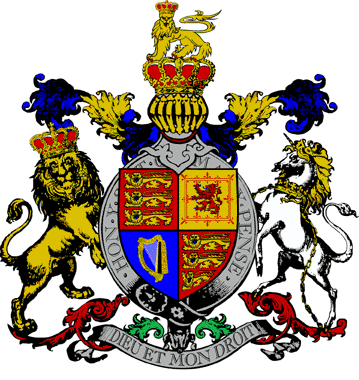| Stoke-on-Trent, England - home of the North Staffordshire Potteries |
|
|
| Index for Royal Coat of Arms on Pottery |
Meaning of the Royal Coat of Arms
![]()
![]()
![]()
previous: Use of the Royal
Coat of Arms
next: pre and post 1837 arms
|
The function of the Royal Coat of Arms is to identify the person who is Head of State. In respect of the United Kingdom, the royal arms are borne only by the Sovereign. They are used in many ways in connection with the administration and government of the country, for instance on coins, in churches and on public buildings. Queen Elizabeth the First instructed that all churches should have a royal coat of arms to symbolise the fact that the monarch was the head of the Church of England. They are familiar to most people as they appear on the products and goods of Royal Warrant holders.
Below
is the motto of the Sovereign
The shield shows the various royal emblems of different parts of the United Kingdom: the three lions of England in the first and fourth quarters, the lion of Scotland in the second and the harp of Ireland in the third. The shield is supported by the English lion and Scottish unicorn. The plant badges of the
United Kingdom - rose, thistle and shamrock - are sometimes displayed
beneath the shield.
| Index for Royal Coat of Arms on Pottery |
|
Questions, comments,
contributions? email: Steve
Birks

